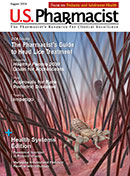Researchers from the University of California, San Francisco report that their study, recently published in Diabetes Care, demonstrates that both group-based and fully virtual programs are effective in reducing diabetes distress and improving glycosylated hemoglobin A1C (HbA1c).
First author of the study, Danielle Hessler Jones, PhD, professor and vice chair for research in the University of California, San Francisco (UCSF) Department of Faculty and Community Medicine, and fellow researchers embarked upon their journey to compare three ways to reduce what they term diabetes distress (DD) to improve HbA1c measurements in adults diagnosed with type 1 diabetes (T1D). According to the authors, DD “refers to the fears, worries, and burdens associated with living with and managing diabetes and that among adults with type 1 diabetes (T1D), elevated DD is highly prevalent (42-77%).”
To evaluate DD and its impact, the team evaluated 276 subjects with T1D and an elevated DD based on a score greater than 2 on the total Type 1 Diabetes Distress Scale and HbA1c greater than 7.5%. Subjects were randomly assigned to one of three virtual group-based programs: 1) Streamline, an educator-led education and diabetes self-management program; 2) TunedIn, a psychologist-led program focused exclusively on emotional-focused DD reduction; or 3) FixIt, an integration of Streamline and TunedIn. Assessments of HbA1c and DD occurred at baseline and at 3, 6, and 12 months.
The team found that all three interventions were linked with clinically meaningful improvements in both DD and HbA1c; however, the emotion-focused program had the most consistent benefits of sustained reduction in DD (Cohen’s d = 0.58-1.14) and HbA1c (range, 20.4 to 20.72) at 12-month follow-up. Both FixIt and TunedIn participants reported significantly greater DD reductions compared with Streamline participants (P = 0.007); however, Streamline and TunedIn participants achieved significantly greater HbA1c reductions than did subjects in the FixIt group (P = .006).
According to Dr. Hessler, “Most patients with diabetes have never heard of diabetes distress or been asked about it, and don’t understand that it can be alleviated.” She elaborated further, “Knowing virtual group-based programs are effective presents an opportunity to change that.”
“Providing individuals with type 1 diabetes with opportunities to recognize and observe these processes, and to ‘stand beside them,’ may enable them to make different choices, choices that can have positive impacts on their health and well-being,” Dr. Jones said.
The authors concluded that “DD can be successfully reduced among individuals with T1D with elevated HbA1c using both the educational/behavioral and emotion-focused approaches included in the study…The study findings suggest the overall value of group-based, fully virtual, and time-limited emotion-focused strategies, like those used in TunedIn, for adults with T1D.”
According to Umesh Masharani, MD, coauthor of the research publication and UCSF professor of endocrinology, “It’s important that clinicians are trained on how to have these conversations with their patients with diabetes as part of normal care. If you don’t address the emotional part of living with the illness, you don’t do well.”
The content contained in this article is for informational purposes only. The content is not intended to be a substitute for professional advice. Reliance on any information provided in this article is solely at your own risk.
Related CE
$7.95 Per CE Exam or $69 for 12 Lessons





